The Whitehall I built in 1983 is the finest bit of boatbuilding I’ve ever done. It began with a commission, so I wasn’t driven by daydreams of cruising as I had been with other boats I had built. For the Whitehall, I focussed on craftsmanship. Halfway through the project, my customer backed out on the deal, but at that point it didn’t change the nature of the work—I was building the boat for boatbuilding’s sake. I was deeply committed to traditional construction and put my best work into the best materials I could find: Port Orford cedar for the planks with mahogany for the sheerstrake, white-oak for the frames, and copper and bronze fastenings. I fashioned the breasthook, quarter knees, and boom jaws from crooks that I gathered and cured. The fruitwood crook that provided the book-matched pair of quarter knees was a once-in-a-lifetime find, perfectly suited to the angle and the curves.I finished the Whitehall bright. The wood was too pretty and noteworthy in its rarity to hide under paint and I didn’t want to conceal the work I had taken such pride in. I launched the boat without christening it, leaving the naming to a buyer I hoped to find. A young couple living in one of the tonier parts of the Seattle metropolitan area purchased it and over the years I lost track of them and the Whitehall.Thirty years later it resurfaced when its second owner sought me out. He’d had the boat for several years and loved it but was no longer able to use it. Feeling very strongly that it belonged back with me and my family, he let me buy it at a fraction of its value. Its transom had remained just as I’d made it, unadorned; the Whitehall was still without a name.
Join The Conversation
We welcome your comments about this article. If you’d like to include a photo or a video with your comment, please email the file or link.

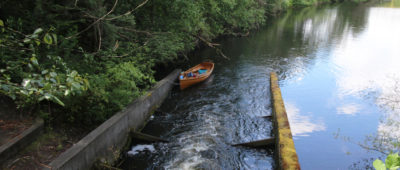
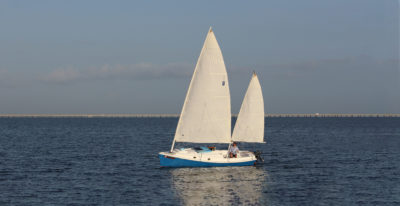
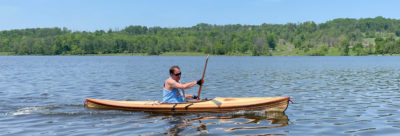
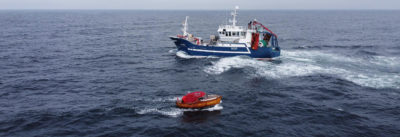
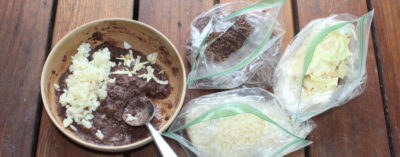
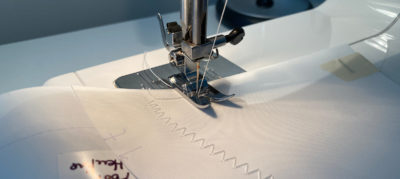
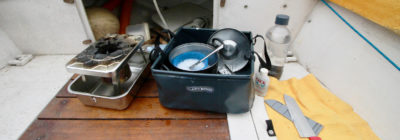
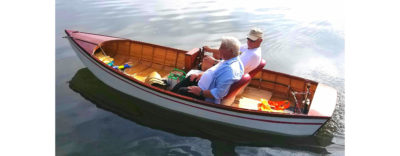
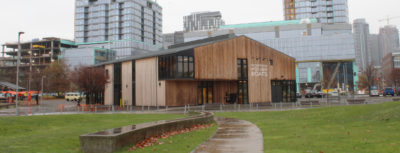
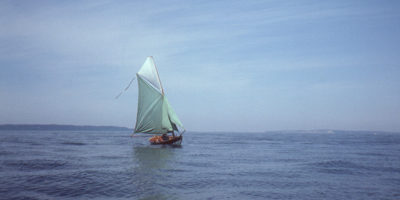
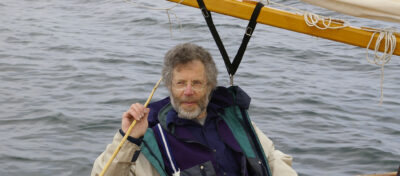
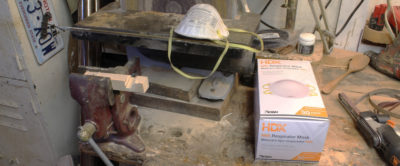
Chris,
What extended oarlock do you use? Do they cause unusual wear on the socket?
I see you are putting your spinnaker to good use!
Scott
I used the brass tube and bronze rod extensions that I made and detailed in my Editor’s Notes following Ben Fuller’s article “Oarlock Extensions.” The oarlocks rotate in the extensions while the extensions stay stationary in the sockets. Kept well greased, I think wear would be very slow. The locks and sockets I used with my sneakbox survived over 2,000 miles of rowing and while the fit loosened, they remained useable.
What a wonderful article…..
A nice little adventure close to home–that’s the magic of getting out on the water, even if you don’t go far. I know what you mean about scars and character. The latest for my boat is a small chip off the port inwale–a memory of needing to drop the sail in a hurry when I missed a tack just off a lee shore in strong winds.
I agree that the scars aren’t a problem. I have seen more than a few boaters who have a hard time enjoying the outing out of worry that they’ll damage their boat. Now that’s a problem.
Amen to that.
Chris,
I’ve thoroughly enjoyed your editorials for many years! From Sea Kayaker to Small Boats. Your obvious enjoyment of life is truly inspirational. I just wish I could have read your stories when I was young and been inspired to experience life as you have, rather than read them now (I’m 63) and feel a little melancholy for not having lived my life as fully as you have.
Sea Kayaker really taught me many things, and opened my eyes to kayaking; and for that, I thank you! Small Boats has opened my eyes to rowing. I just wish that it had opened my eyes about 30 years ago!
Keep the stories coming!
Kevin, I hope you are the same Arabian that I was with in Korea in ’79. I am 62 and starting another boat this year. I hope it’s not my last. I no longer dream of crossing oceans but local lakes and streams have many adventures in them.
In celebration of “scars,” I rejoice with each paddle in the 17′ Arctic Tern with the rebuilt bow. A kind WSDOT emergency vehicle driver helped me retie both ‘yaks on the roof after a dramatic tie-down failure on State Route 520. Epoxy, spare okoume, patience, and an enlarged tolerance for function over unblemished beauty served well. We love Mercer Slough as a wet classroom for grandkids having their first paddles.
Your “always have a plan B” piece in Sea Kayaker some years ago is counsel I’m using with ever greater frequency in conversations with a high-school age grandson whose strength and ambitions for adventure sometimes outpace yet-under-development judgement.
You and Tom (Wooden Boat) have given the Pacific Northwest its due many times over with features every direction from Port Townsend. Thanks
Scars and dings are honor, respect. This boat may have been been built extra-beautiful, but she was still designed to be used, and used for industrial purposes. You honor not only the boat, but all the designers, builders, and boaters before you if you allow this boat to do what she was bred for. And if you do, she is gonna get dinged. But knowing she can get dinged and take it is actions not words that you love this boat.
If you haven’t named her yet, how about the Velveteen Rabbit.